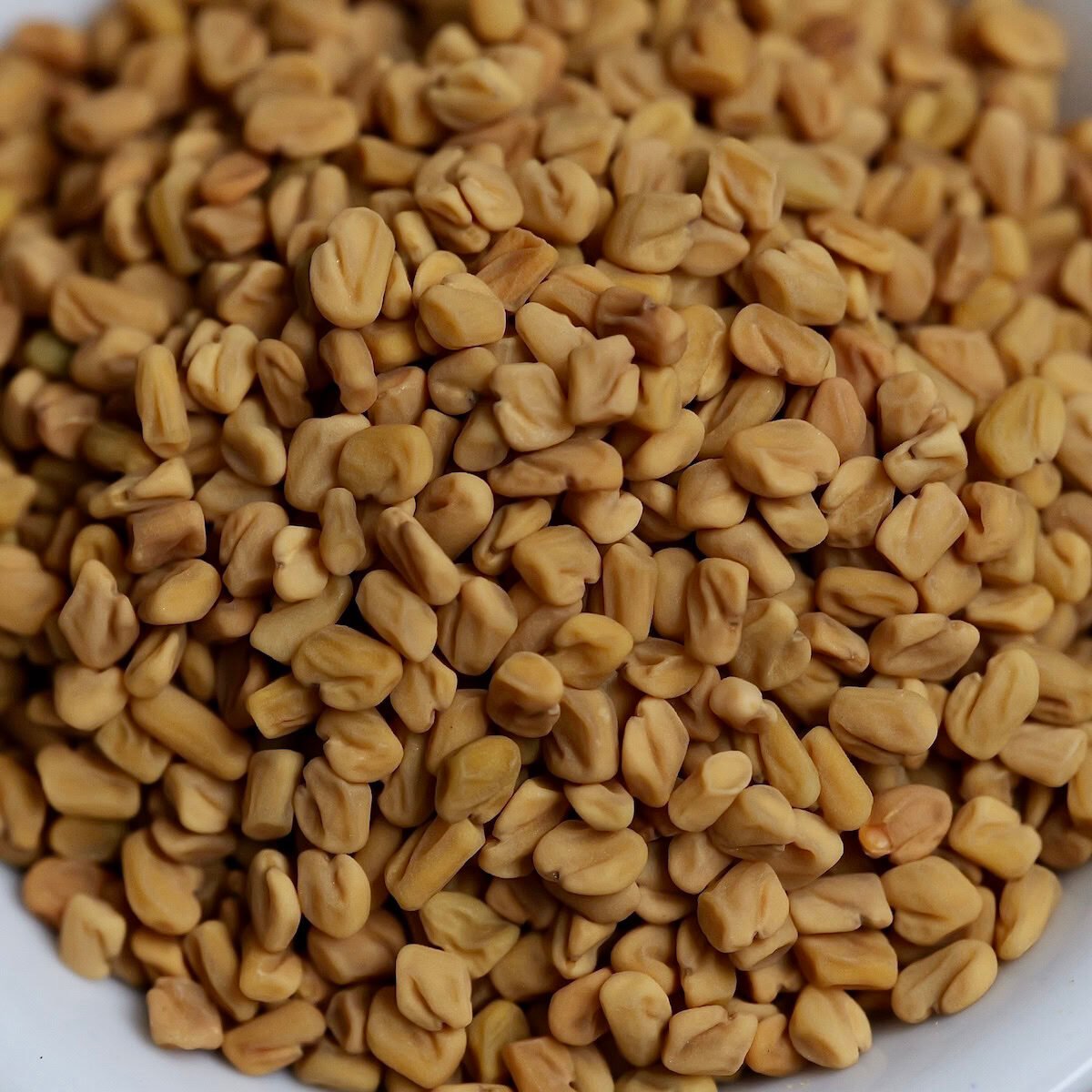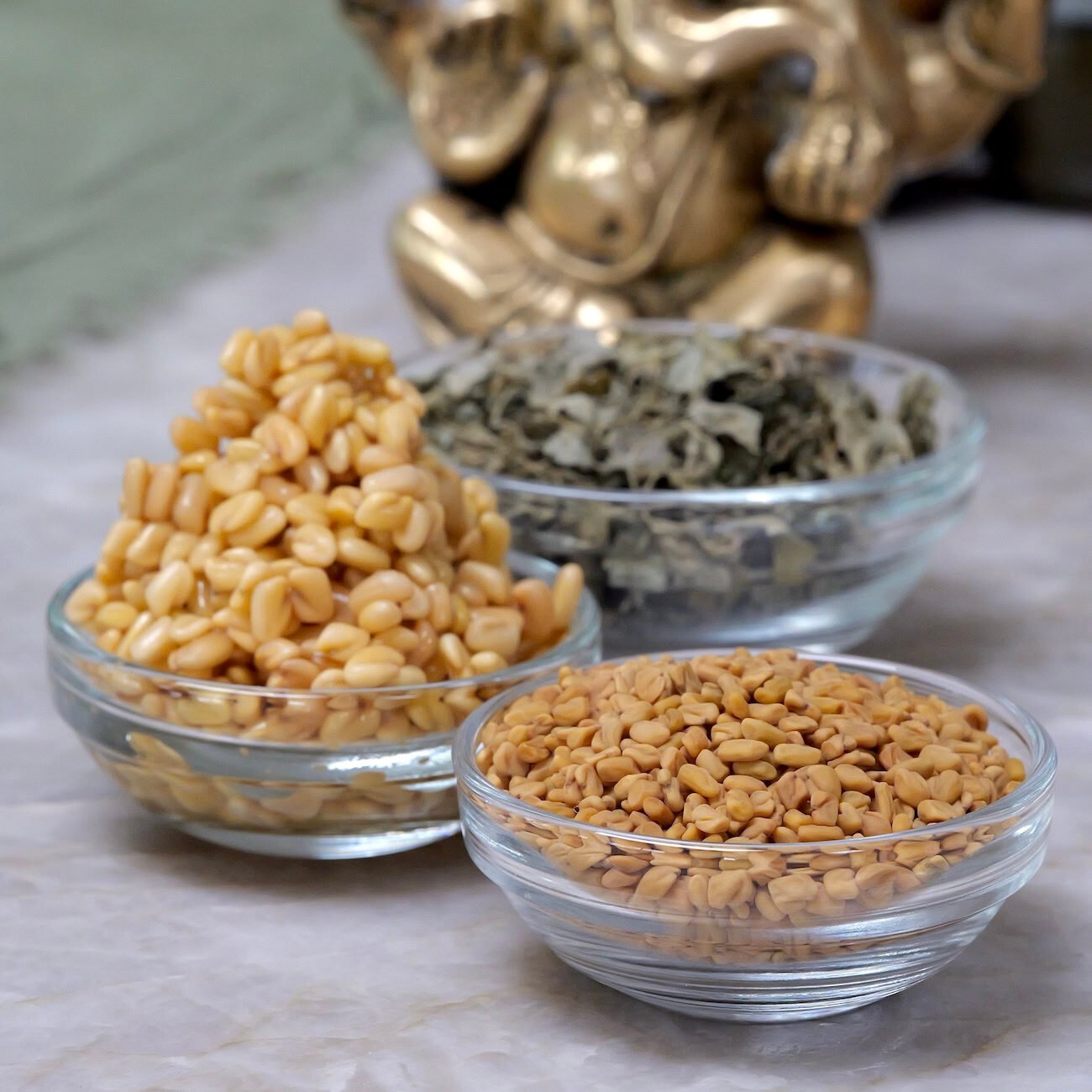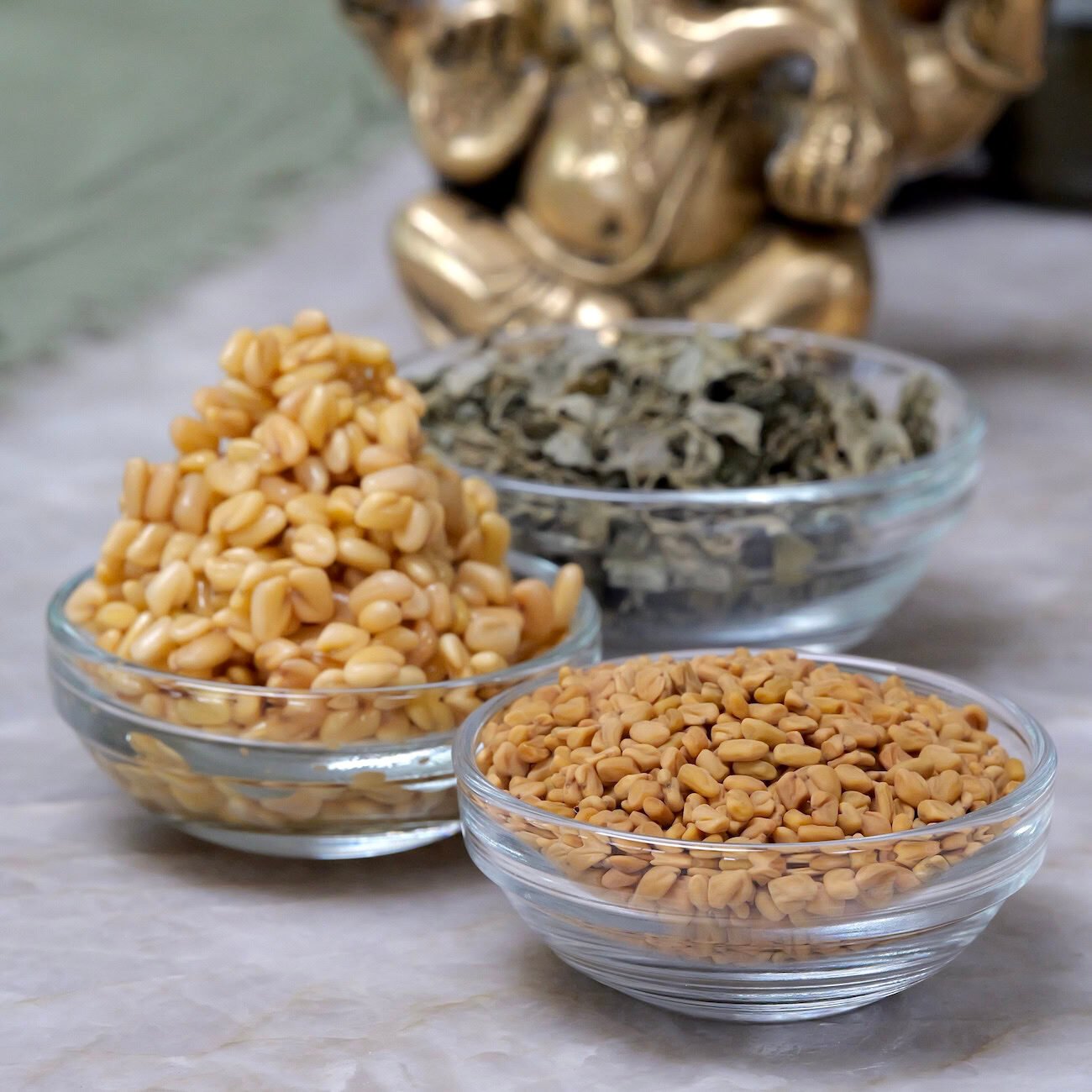Fenugreek
Fenugreek is both the spice and the herb derived from the seeds and leaves of Trigonella foenum-graecum, an annual in the legume family.

REGION OF ORIGIN
While we don't know for certain, fenugreek most likely originated in a belt spanning Southern Europe, the Eastern Mediterranean, Western Asia, and areas of India. This is where the wild ancestors of fenugreek grew and where it was first cultivated. The plant's resilience allowed it to be one of the earliest domesticated crops in human history.
PART & COLOR
Fenugreek's small, angular seeds resemble pebbles. They are golden-yellow to amber when fresh, and darken to a light brown to reddish brown upon drying. Fresh fenugreek leaves are a vibrant light green, but fade to a muted olive-green shade when dried.
HARVEST
Fenugreek is an annual that can grow in various climates with different planting and harvesting times. Leaf harvesting typically begins 30-40 days after sowing and can continue after every 15 days until flowering. Seed pods mature within 3-5 months, containing 10-15 seeds per pod. The entire plant is cut and dried in the sun to allow the seeds to fully mature.

FLAVOR & AROMA PROFILE
Fenugreek offers a fascinating interplay of aromas and flavors. Fresh leaves possess a subtly sweet, botanical scent with hints of musk and earth, while their taste reveals a mild bitterness with lingering grassy notes. Dried leaves retain their musky, earthy qualities, but their bitterness and aroma intensifies and they develop a toasty flavor.
The seeds provide a greater flavor journey. Unroasted, they have a sharp, somewhat astringent bitterness with nutty and earthy undertones, but their true claim to fame is the subtle maple syrup-like aroma due to the compound sotolone. Roasting transforms fenugreek seeds, mellowing their bitterness and unlocking a complex blend of warm, nutty flavors with hints of caramel sweetness.
CULINARY USES
Fenugreek offers remarkable versatility. Fresh leaves lend a subtle herbaceousness and mild bitterness to curries, sauces, salads, and soups. Dried leaves, also called kasuri methi, impart a more concentrated warmth and savory complexity to spice blends and marinades.
The seeds are often used alongside the leaves to achieve a deeper flavor, bringing an earthy, nutty dimension to both sweet and savory dishes. Seeds are commonly incorporated into breads or toasted in oil to infuse their essence. Toasting or soaking the seeds adds another dimension of richness to their flavor and alters their texture. When blended, soaked fenugreek seeds in particular create a viscous, creamy paste that is prized for thickening sauces.



